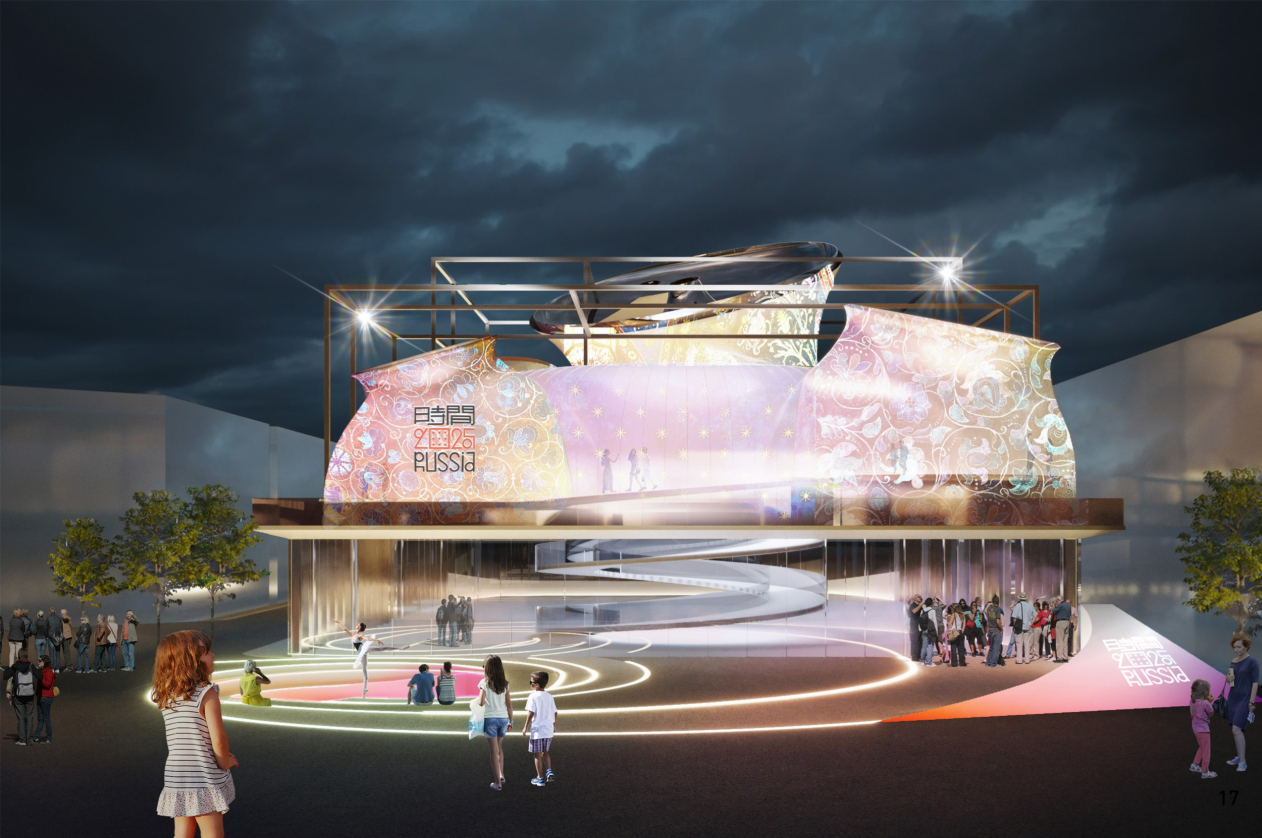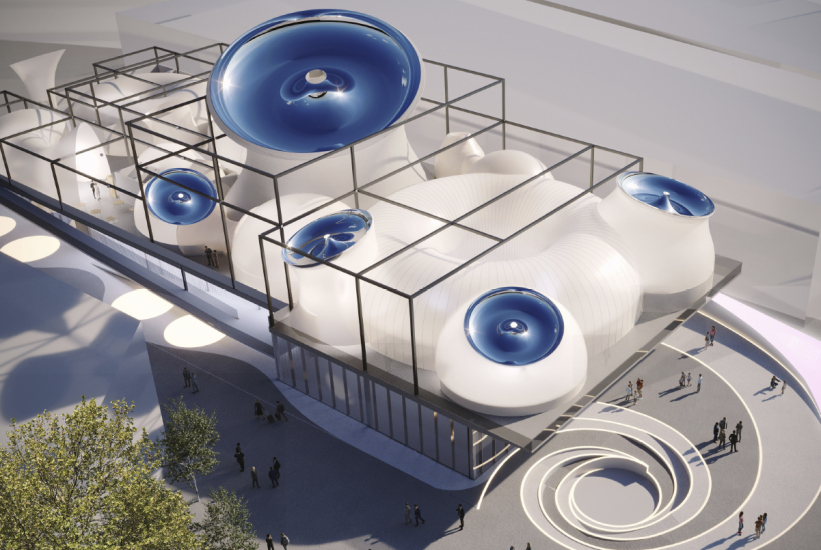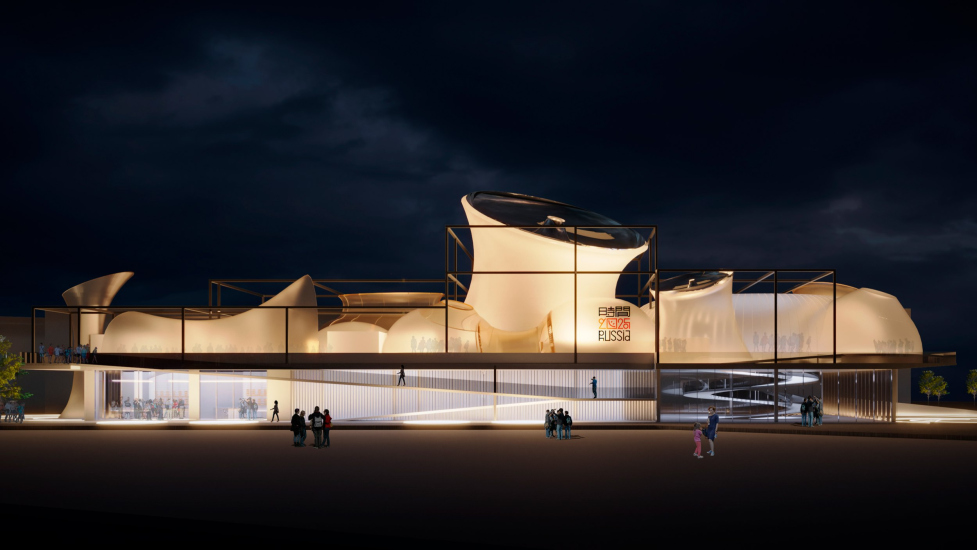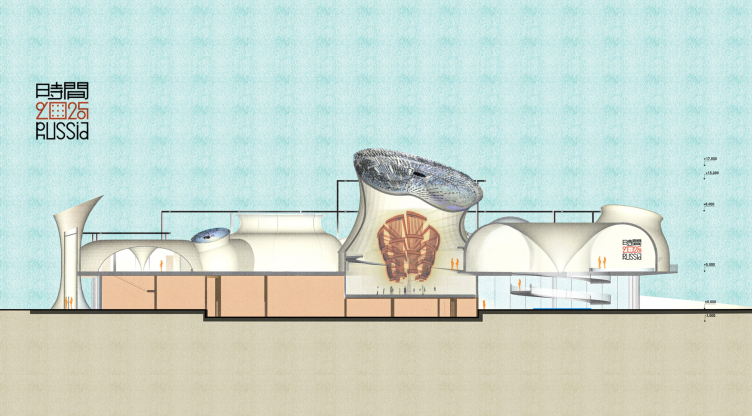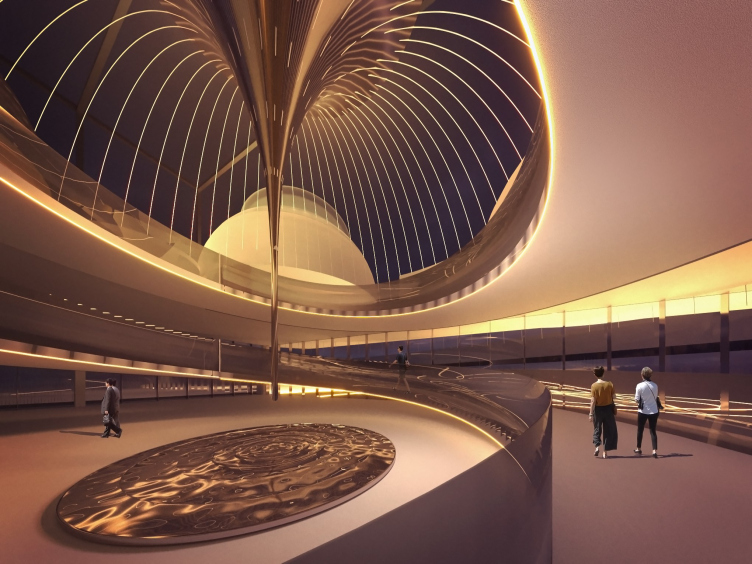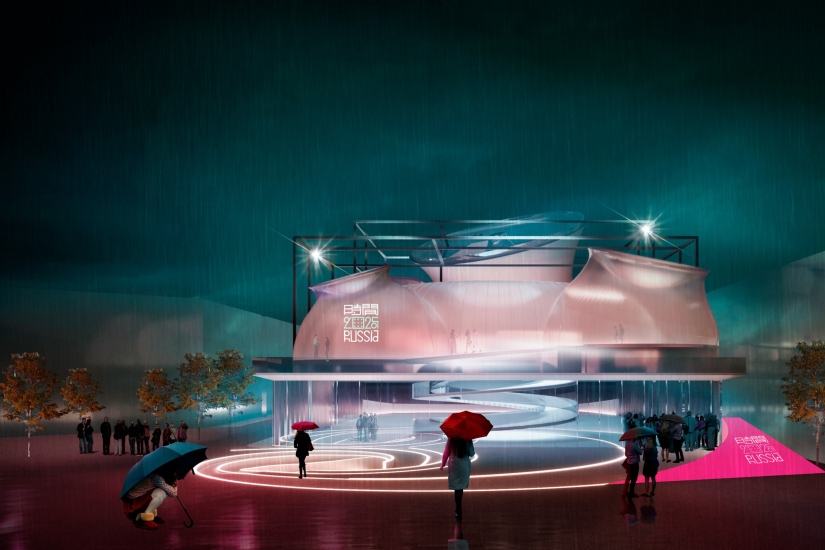The Russian pavilion designed by Wowhaus was submitted for the second competition, whose brief assumed that the main theme of the pavilion would be Time. Some participants approached this theme with a reserve, while others made it the main subject of either the exposition or the architecture of the pavilion itself. Wowhaus, however, interpreted the “time” theme paradoxically, perhaps even ironically, naming their project “The Most Temporary Pavilion”. Not “Time” or “Timely”, but specifically “Temporary”. Short-term. Passing. Fleeting.
Hereby arises a paradox linked not so much to the interpretation of the competition brief but to the specifics of world expos in general. On one hand, a typical EXPO lasts for several months and is designed so that the majority, if not all, of its constructions will eventually be dismantled. The exhibition is grand but temporary by definition. On the other hand, in recent decades, there has been an increasing call to preserve and utilize EXPO buildings, combining an ecological narrative with a certain degree of pride: the decision to preserve one pavilion or another becomes a reward and recognition of its qualities, including architectural ones. For example, in Dubai, much has been preserved, and the central part of the 2020 exhibition has been turned into an office center with commercial (sic!) housing, which, however, led to the “developer” image of the entire central part of the 2020 exhibition.
Thus, according to the Wowhaus proposal, the project of the Russian pavilion raises the not-so-fashionable category of temporality “on a pedestal”. But then again, perhaps not so unfashionable – in modern life, reuse is highly valued.
The architects proposed to construct the pavilion from architectural fabric on a metal frame made of PVC membrane, ETFE film, and glass-reinforced plastic. All of these are modern materials, sturdy and lightweight, and they also allow – once again, with ease – the creation of flexible, curved, “inflated” forms, futuristic and atypical. Here, one recalls the previously mentioned Luxembourg Pavilion in Dubai 2020 designed by the Metaform– it too was made of architectural fabric with multiple floors inside. The Wowhaus pavilion follows the same trend – that is, it is simply temporary, but it’s hard to say why it’s “the most” temporary.
The pavilion’s shape is quite complex; it resembles an enlarged colony of some microfungi bred in an “aquarium” made of a metal frame that defines its contours a hundredfold. Some elements are larger, some smaller, some have blue “caps” made of, as stated in the project’s description, light-reflecting material. Looking at this weird conglomerate, you think that it could be anything: each volume could grow or lean in any direction, curl up or unfold its “collar” at the top.
Meanwhile, there is a certain logic in the arrangement of these volumes – the lower tier is solid, and in the upper tier, which actually dictates the grouping of volumes, halls of permanent and temporary exhibitions are divided into domes of various sizes.
The master plan. “The Most Temporary Pavilion” at World Expo in Osaka
Copyright: © WOWHAUS
“The Most Temporary Pavilion” at World Expo in Osaka. A section view
Copyright: © WOWHAUS
The route is laid out along a continuous line of one ramp: it spirals and unwinds, rising from one level to another.
The explosion diagram. “The Most Temporary Pavilion” at World Expo in Osaka
Copyright: © WOWHAUS
Upon entering, according to the description, the visitor enters a “hyper-transition point”. “Time transforms, stretches, and distorts, reflecting in the geometry of the external and internal space” the explanatory note says. And here we move from optional temporality to the realm of another narrative: the architects did not limit themselves to self-irony, and the form of the pavilion should be understood as an image of time – in a futuristic key, based on paradoxes, the visual representation of which we are accustomed to encountering in science fiction films.
What we are seeing here are a kind of bubbles of time, into which the visitors would be invited to enter through the “hyper-transition portal” and then wander through paradoxes, where – and here I am indulging into a fantasy, but the material is highly conducive to it – space could contract and expand, or droplets focusing from the domes, or other amazing properties of space would visualize paradoxes of time for the visitor.
The entrance area with a pool. “The Most Temporary Pavilion” at World Expo in Osaka
Copyright: © WOWHAUS
“All other places are very much not strange. There must be at least one very strange place” ©
The facades made of architectural membrane, according to the brief, were also planned to be of the “media” kind, but through projection mapping instead of LED backlighting. Two types of options are proposed: from paintings of the avant-garde period and from the ornaments of the Cathedral of the Intercession on the Moat, also known as Moscow’s St. Basil’s Cathedral.
It never ceases to amaze me how different EXPO pavilions of various years echo each other: if we look at the main façade with ornamental mapping, then “The Most Temporary” (with adjustments for the bulging shapes and changing patterns, of course) may remind us of the Russian pavilion at the 2010 World Expo, designed by the TOTEMENT/PAPER architects. Remember the pavilion that boasted towers with ornaments? It is still there in Shanghai, and you can still see it.
But here in Japan, the volumes resemble porcelain cups; they are somehow noticeably Japanese despite the Russian ornaments. Because of the tilt in both directions, they seem to sway: either cups or heads of porcelain dolls, Chinese (well, Japanese, in this case) bobbleheads. In short, a certain Japanese note, which, I dare say, almost all of the contestants sought to bring into their projects of EXPO pavilions, is felt here too.
The architects unfold the ideas of “The Most Temporary” pavilion into three component parts: the futurism of the 1920s, Krutikov’s Flying City, Malevich’s Aerograd; time as a category not defined by anything in physics (and here we learn that the Big Bang occurred 13.7 billion years ago); dematerialization or “emersion” – we’ll have to take note of the concept – as one of the trends in modern architecture and construction. Curiously enough, it’s easy to notice that all three declared themes have nothing in common with either the competition brief or the sub-themes of EXPO 2025. This is neither good nor bad – everyone creates as they can and want, what matters is the result – it’s curious, actually, that the same inputs receive different interpretations from different teams.
In short, time can evolve in any way and lead to anything. And how one wants to puncture it in some “secret” spot and find oneself in a better future.

